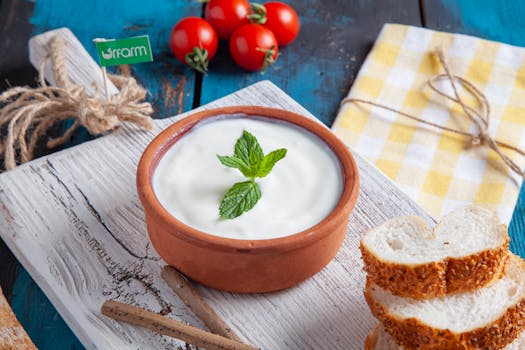Our Co-Founder, Koray Erimez, uses his expertise in food engineering to drive Atolita’s commitment to quality and innovation.
While chefs are artists in the kitchen, Food Engineers are the scientists and innovators behind the scenes, transforming raw ingredients into safe, nutritious, and delicious products. For example, consider the seemingly simple process of making yogurt. While a chef might focus on flavor combinations, a food engineer is responsible for ensuring the right fermentation conditions, selecting the ideal bacterial cultures, and optimizing the production process. It’s this meticulous attention to detail that guarantees the creamy texture, tangy taste, and nutritional value we expect from our yogurt.
A Food Engineer is a professional who specializes in applying scientific principles and engineering concepts to the development and production of food products. They create processes, analyze data, and create solutions to improve food safety, flavor, and nutrition. Food Engineers perform research and development activities to create new food technologies, optimize existing processes, and ensure compliance with food safety regulations.
What is Food Engineering?
Food Engineering is “an engineering discipline in which physical, chemical and biological sciences (Food Science and Food Technology) find application in the processing, storage, transportation, production and development of new foods.”
An example is the traditional method of making strained yogurt, known as yoğurt. This method dates back centuries, with early Turkish nomads discovering that fermenting milk in animal skins resulted in a thick, tangy product that could be stored for longer periods. Modern Food Engineers study these methods to optimize the fermentation process, ensuring both quality and safety while maintaining cultural significance (Journal of Dairy Science).

What does a Food Engineer do?
The role of a Food Engineer is to develop, design, and improve food products and processes. They use principles of engineering and food science to create processes and products that maximize the efficiency and safety of food production, from the raw material phase to the finished product. Food Engineers may also research and develop new food products, including new food ingredients, or improve existing food products. They may also develop new packaging methods and equipment to improve the safety, quality, and shelf life of food products.

For cheese production, traditional Turkish cheeses like beyaz peynir showcase the importance of temperature control and microbial cultures. By applying engineering principles, producers can enhance flavor and texture while maintaining the artisanal qualities that make these cheeses special. Food Engineers work on refining these processes to ensure consistency and quality, making these products accessible to a broader audience.
Real-World Impact
In a global context, Turkish dairy producers are increasingly leveraging food engineering to improve their processes. For example, a well-known Turkish dairy brand developed methods to produce labneh, a thick yogurt spread, using traditional straining techniques combined with modern hygiene standards. This ensures that consumers receive a high-quality, authentic product that is safe and delicious (International Journal of Food Science & Technology).

Conclusion
Food Engineers play a crucial role in the food industry, particularly in dairy production. Their work ensures that the products we enjoy are not only tasty but also safe and nutritious. At Atolita Dairy, we appreciate the blend of science and tradition in creating our artisanal dairy products, rooted in our Turkish heritage. As we strive to bring quality, affordability, and sustainability to our community, we recognize the essential contributions of Food Engineers in shaping the future of food.

Pingback: Atolita Who? Get to Know Our Founding Team – Atolita Dairy